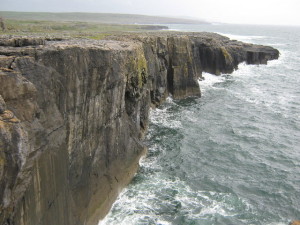Rising Seas: the picture is far from level across different parts of the globe
Climate change isn’t fair. Those who pollute the most per person (generally Europeans and North Americans) are not those who suffer the worst of the consequences, and nowhere is this more evident than with sea-level change. There is no ‘global sea-level’: the Moon, ocean currents and temperature differences all conspire to produce substantial differences from place to place in the distance of the sea surface from Earth’s centre. And the sea-level changes that climate change will induce won’t be uniform either. Although the trend is towards rising waters across the globe – and rich countries such as the Netherlands and cities such as London will be under some threat – climate models predict that the change in Europe will be much less extensive than that in the tropics. More importantly, it’s the less-industrialised world that will struggle most to protect their people from these changes.
In its 2013 report, the Intergovernmental Panel on Climate Change estimates that there will ‘likely’ be as much as 0.55 metres of global mean sea-level rise above 2981-2005 levels by 2080-2100 under its most optimistic estimate of greenhouse gas emissions. Under the most pessimistic estimate, it could be up to 0.82m. But whilst in Europe the rise would only be 0.2 metres in this case, the east coast of the Americas, Southern Africa and parts of the Pacific might see a full metre. The most obvious consequence of this is coastal flooding: these areas could see a thousand-fold increase in extreme flooding events by 2100. Yet at the same time, for less than five per cent of the world’s ocean there will actually be a drop in sea-level.
To explain this, we need to consider what the IPCC means by sea-level change. It’s important to distinguish between change that is ‘eustatic’ – as measured with reference to the fixed centre of the Earth – and change that is ‘relative’ to the local shoreline. Eustatic sea-level rise in a particular region can be brought about by human-enhanced global warming because water expands as it warms, land-based ice sheets release water into the oceans when they melt and climate change alters precipitation patterns and sea currents that move water from place to place. Relative sea-level change, though, also depends on whether the land is rising or sinking. It’s an important distinction, because it’s the relative sea-level that is most important when assessing potential threats to society. Although there will be ‘eustatic’ sea-level rise everywhere, it’s the relative level that will in rare cases go down, largely because land rises when the glaciers atop it melt.
Relative sea-level rise itself means different things in different places. Low-lying areas will obviously suffer more than high-lying ones for the same amount of change. Bangladesh and Vietnam are particularly low-lying countries in which millions of people could be displaced by sea-level change, and Pacific island nations would disappear entirely with just one metres worth of change, as they are likely to experience greenhouse gas emission scenarios. Some more industrialised countries, including the United States, will face dangerous rises too, but whilst they can afford to protect their cities, it’s the poorer nations that have contributed negligible amounts to climate change that will have to endure the brunt of the suffering. This is where the injustice of climate change really bites hard.
![Rising Seas Rising Seas: the picture is far from level across different parts of the globe Climate change isn’t fair. Those who pollute the most per person (generally […]](/wp-content/uploads/2015/05/sea-rise-620x300.jpg)
